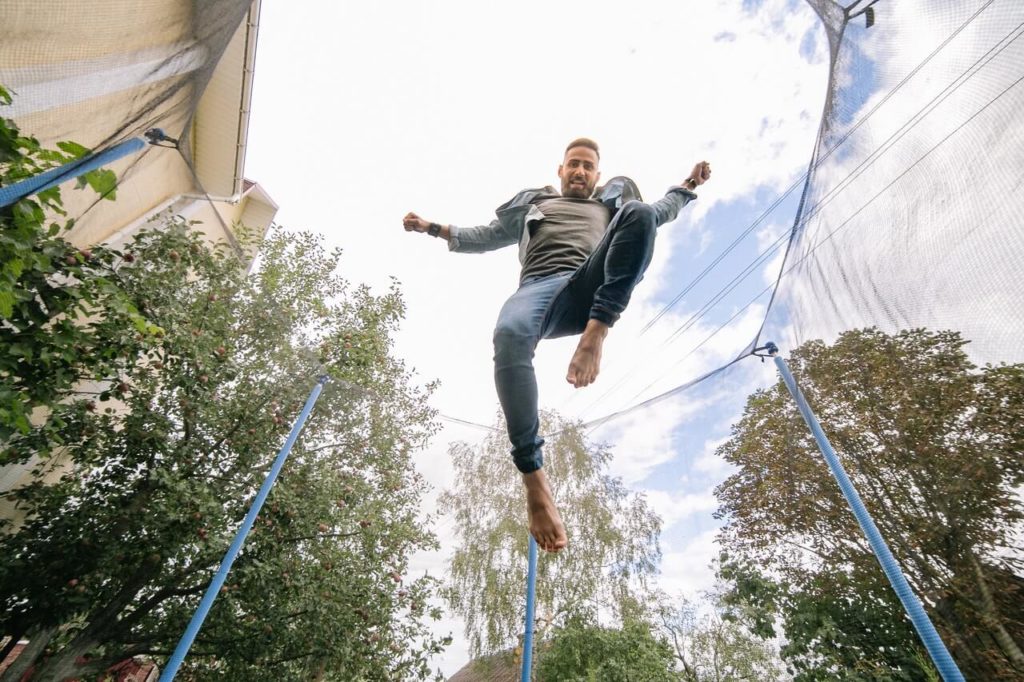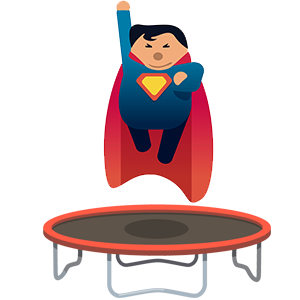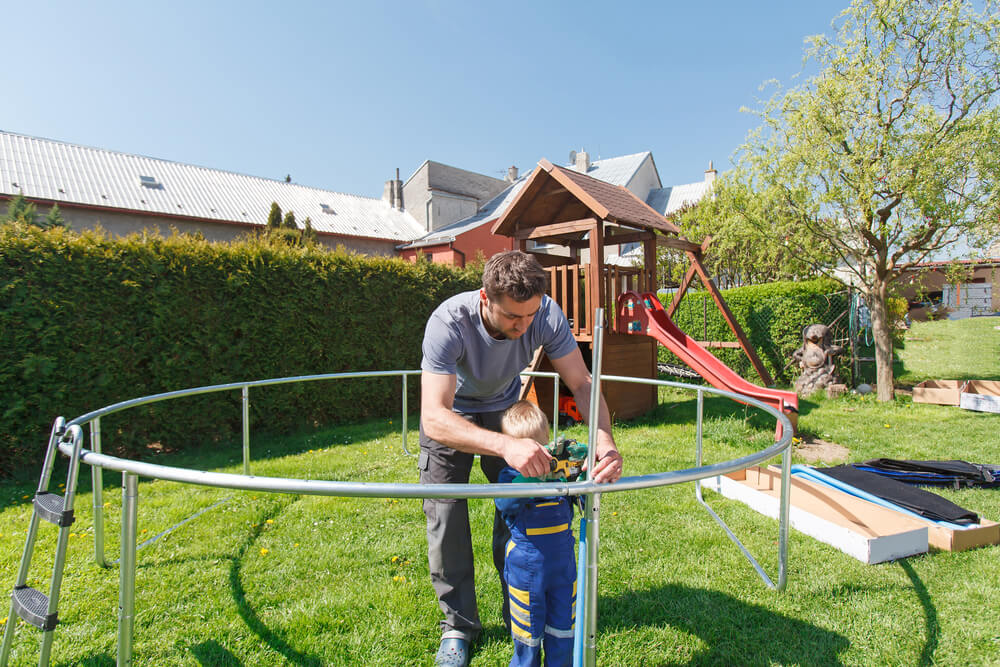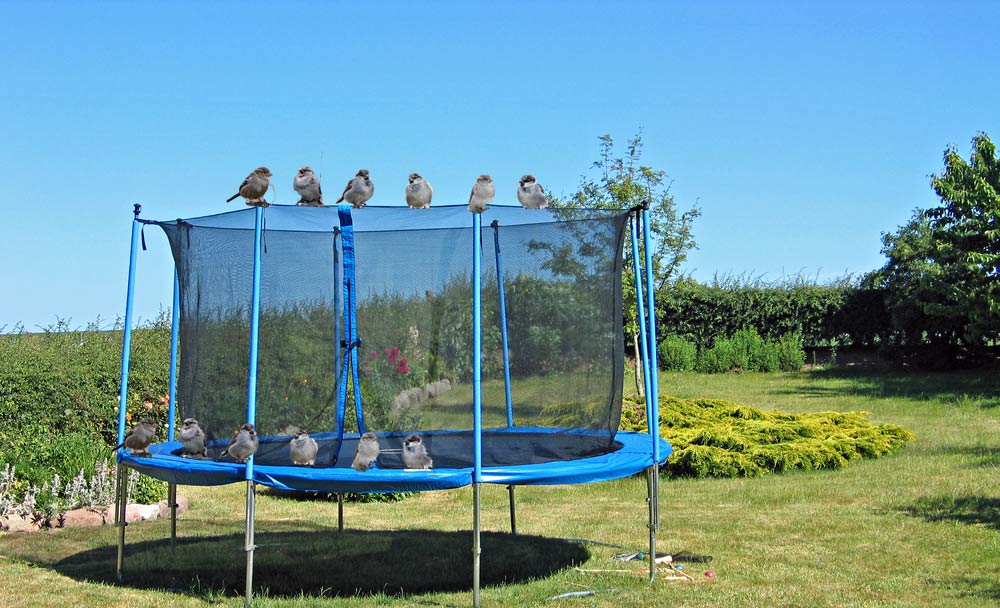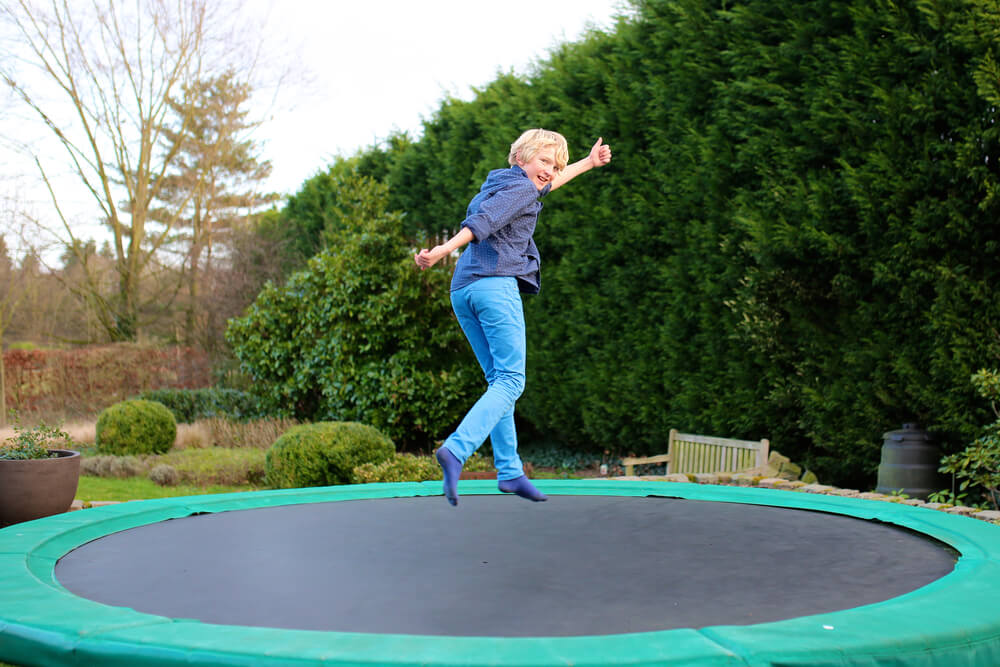Trampolines are a perfect way to keep you and your family active and have endless fun. A bouncy trampoline makes you feel weightless and flying in the air. You can make your trampoline bouncier without crossing the springs.
When your trampoline is bouncy, it gives you so much fun and burns off your steam. With time, your trampoline is likely to become soft and saggy. You’ll need to upgrade or find ways to make your trampoline bouncy again.
Your trampoline may not be bouncy because either the springs are not of good quality, the trampoline isn’t the right weight for the jumper, or the springs have lost elasticity over time. Luckily, we’ve several ways to make your trampoline bouncier without crossing the springs.
Let’s jump in!
Ways to Make Trampoline Bouncier without Crossing the springs
1. Replace Old Springs
Old and rusty springs significantly reduce your trampoline’s bounce height, so you need to replace them. When you check and tighten trampoline screws, you’ll likely notice rust on old springs. They have red tints on them. Worn-out springs will resemble a broken slinky.
Trampoline springs wear out with years of use and decrease their bounce height. Replacing old springs is the best solution, and it’s inexpensive.
With newer springs in your trampoline, the bounce height increases significantly. There are a variety of springs you can choose from for your trampoline. You can choose springs with elastic rings to give you a higher bounce height than metal springs.
Trampoline springs replacement cost is minimal, increasing the bounce height by 50%.
2. Regularly Maintain your trampoline
Trampoline maintenance is important to keep it bouncy. Regular examination and tightening of the screws to ensure they’re in place keep your trampoline legs and the frame retaining the kinetic energy they should have.
Tight screws give your trampoline the best bounce and ensure its safety, especially if you have an old motel with metal springs that are no longer adjustable.
Regular checking can reduce the risk of breakage and injury. Check for dents, rust signs of wear, and damage. Inspect trampoline covers for tears or rips. The fabric should always be intact to avoid safety risks.
Periodically dismantle and reassemble your trampoline if it has a frame so that you can inspect for rust and any other form of damage. Remember to put your trampoline in a safe storage place in case of extreme weather.
3. Add More Springs
You can make your trampoline bouncier by adding more springs. If you have a round trampoline, add one large spring in the middle or on the ends. Adding six more springs and spacing them well on the frame can give you a 50% increase in the bounce height without spending a fortune.
The springs are easy to install and inexpensive. It’s likely to take you less than ten minutes of your time to add the springs. You’ll only need simple tools like a wrench or screwdriver for metal springs and a pair of scissors for elastic rings to get your desired bounce height.
You can also replace the old springs gradually by removing a few of them weekly until you get your desired trampoline bounce. When you’re adding more springs, make sure to space them evenly around the frame for a uniform bounce height.
If you have a large round frame with only one spring, you can add six more springs around the frame.
4. Add Heavy Duty Springs
If you have an old trampoline with springs, you can add heavy-duty springs to make it bouncier. Elastic or heavy-duty springs are the best to make your old and worn-out trampoline bouncier.
Try different springs on your old trampoline to see a difference in the bounce height. Remove the old springs and replace them with heavy-duty types. You’ll need to use a lubricant for metal springs every six months to maintain maximum bounce height.
Heavy-duty elastic springs work best when replacing old metal springs that no longer make your trampoline bouncy. You’ll install them by removing old ones and attaching the elastic springs to the frame.
You’ll spend at least ten minutes adding heavy-duty springs to your trampoline.
5. Double Spring Trampoline
When you double spring a trampoline, you fit two springs in one hole on the frame without crossing them.
If the two springs are the same length, the thicker one gives a better bounce. When double springing your trampoline, always avoid springs less than 7’’.
The diameter of the spring coil also affects the quality of stretch of the spring. Thicker springs have a better stretch for a bouncier trampoline.
What to Consider Before You Make Your Trampoline Bouncier
It feels great to jump on a trampoline that can give you a good bounce. We all love being in the sky, feeling weightless, back-flipping, and landing on a bouncy trampoline. All that happens with a bouncier trampoline.
Before you’re tempted to make your trampoline bouncier to get yourself higher in the air, you need to consider some things.
1. Does Your Trampoline Have a Spring Cover?
A trampoline spring cover help to keep trampoline springs safe in case you accidentally land on them. Consider having a safety net if you want to make your trampoline bouncier.
If someone accidentally lands on uncovered springs, they will get severe injuries, or the springs will break, or both.
2. Does Your Trampoline Have a Safety Net?
If you make your trampoline bouncier, the chances of losing control when landing is high. You can fall on the ground or off the trampoline if it’s bouncier.
A safety net is very important if you consider a bouncier trampoline. Ensure the net is tight and all the screws and bolts are in place.
If you don’t have a safety net, get one before making your trampoline bouncier.
Factors That Affect Bounciness of a Trampoline
1. Trampoline Springs
Springs absorb the impact of your bounce and release it to throw you high up in the air. Thicker and longer springs produce a better bounce.
Thicker springs are made with longer wires. The wires give the springs more energy to handle your weight.
Bouncier trampolines are made with 8.5’’ to 10’’ while standard trampolines have 5.5’’ to 7’’.
2. Jumping Mat
Trampolines have two types of canvas jumping mats. The performance and recreational mats.
Performance jumping mats are more bouncy because they allow more airflow, which results in high bounces.
3. Trampoline Shape
A rectangular trampoline is usually more bouncy. Your weight is evenly distributed to allow high bounces from any position on the trampoline.
If you have a round trampoline, you’ll realize that it’s more bouncy at the center of the mat than other parts of the trampoline.
Frequently Asked Questions
Do Trampolines Get Bouncier Over Time?
The bounce height of your trampoline depends on whether it’s new or old. If you have a new trampoline, you’ll notice it’s bouncier than an old one.
New trampoline springs still have good elasticity, old ones have a good stretch, and some are rusty. However, it takes time before you need to replace the springs for your new trampoline.
Replace the springs of your old trampoline to get it bouncy again.
Does Water Make Your Trampoline Bouncier?
Yes, the water does your trampoline bouncier, the trampoline mat is waterproof plastic. Water forms a thin layer on the mat; you’ll see it as a shallow pool or small drops.
A cold or wet trampoline mat is less elastic, resists deformation, and creates a more vigorous rebound than a dry, softer trampoline. If you jump on it, you bounce straight up. Water evaporates when you jump on the wet trampoline.
Are Wet Trampolines Slippery?
If you’re a risk-taker, you may love the feeling of slippery jumps. Trampolines are slippery when wet.
It’s fun jumping with your friends on the trampoline, but jumping alone on a wet trampoline is recommended. The risk of colliding and injuring each other is high on a wet slippery trampoline.
Consider having a safety net on if you allow your children to use a wet trampoline. Closely monitor them, so they don’t knock on each other. It will help to reduce the chances of children slipping off the trampoline mat.
What Makes Trampolines Bouncy?
When you jump on your trampoline, springs stretch as you force its surface downward.
The springs then pull back against your weight. Then, they return to their normal state while pulling the canvas fabric back to its original shape.
What Shape Trampoline Has the Best Bounce?
Rectangle trampolines give you the best bounce. The springs of a rectangle trampoline work independently to create an even takeoff and landing, irrespective of your position on the trampoline when you jump.
Rectangle trampolines are more expensive than round ones. Due to their shape, they need more support. Round trampolines are stronger due to their circular frame. They are relatively cheap due to the ease of manufacture.
How Can I Make My Trampoline Quieter?
Trampolines tend to squeak over time due to; the friction between metal parts (springs and metal frame), friction between metal pieces (Springs and metal frame)
To make your trampoline quieter, you can try lubricating joints by spraying some WD40 on them. It works better when you spray while kids are playing on it.
Wrap Up
We all love a good jump on a bouncy trampoline. However, it can be frustrating if your trampoline loses its bounciness. Luckily, there are ways to make it bouncier without crossing the springs.
We’ve reviewed some ways to help you get a bouncier trampoline without spending so much time or money on it and crossing the springs. We hope they’ll be of help.
Happy bouncing!

